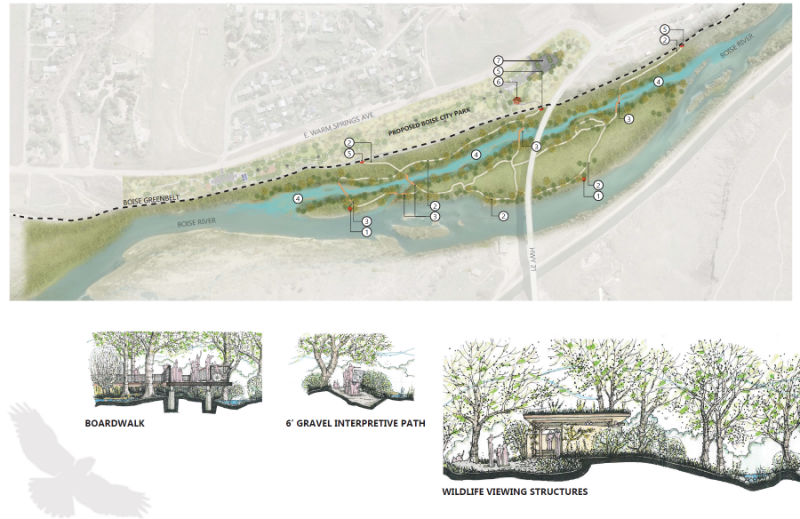By Gregory Kaltenecker, IBO Executive Director
Most people know about the Intermountain Bird Observatory’s Lucky Peak Station high in the Boise foothills. Volunteers help band hundreds of migratory birds there each year. But IBO has a new research station on the Boise River on the pool created by the Barber Dam. This area of the river has been heavily impacted by the dam which was built more than 100 years ago. IBO has plans to restore some of the river’s natural function and improve aquatic and riparian habitat.
IBO has worked for the past five years to secure more than 20 acres of property along the Boise River in southeast Boise. First, in 2012, Boise State worked closely with Idaho Transportation Department to secure management of a parcel of river bottom at the Highway 21 bridge. A few years later, the university purchased an adjoining parcel of riverfront.
For the past few years the Boise River Research Station has been used to develop an outreach and education program headed by Education Director, Heidi Ware. The long range plan is to make major improvements to the property to enhance its natural features and to develop infrastructure that will aid in outreach activities. Come on the June 6 field trip with the Boise River Enhancement Network to see the area for yourself.
The plan includes restoring a natural side channel and reconnecting it to the river to improve fish and wildlife habitat. Side channel habitat is sorely lacking along the Boise River as a result of urban and rural development. Side channels provide refuge for fish when river flows are high, and the cover provided by trees and shrubs cools the water and protects the fish from predators. Students learn more when they can explore the riparian area safely, so an interpretive trail system is being planned. To minimize impact on the wetlands and protect critical habitat, raised boardwalks will be installed in some locations. Wildlife viewing blinds will be built to avoid disturbing wildlife, especially nesting birds. The important upland habitat will also be restored by removing invasive plants and fostering growth of native vegetation like willows and woods rose. Pollinator gardens filled with flowering plants that bees and other insects rely on with also be built.
